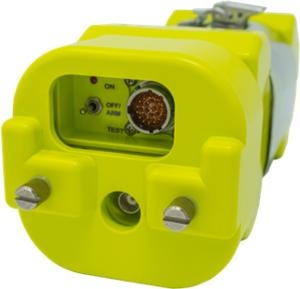Tue, Aug 28, 2018
Agency Recorded More Than 8,700 Such Alerts In 2017
The FAA has published in Information For Operators (InFO) focused on the issue of ELT false alerts. It also provides recommendations and additional information for the prevention of false alerts.

In 2017, ELTs generated 8,786 false alerts in the United States. The majority of 406 MHz ELT false alerts occur during testing and maintenance.
A false alert is a non-distress activation of a 406 MHz emergency beacon (either an ELT, Personal Locator Beacon [PLB], or Emergency Position-Indicating Radio Beacon [EPIRB] for maritime use). It can be caused by accidental activation during testing, mishandling, improper installation, or unfamiliarity with beacon operation. Search and Rescue (SAR) personnel respond immediately to every activation of a 406 MHz SAR Satellite-Aided Tracking (SARSAT) beacon. This response will stop only when it has been proven that the activation was a false alert. Because of this, every false alert has the potential to put rescuers in harm’s way and waste valuable resources. A method to help save time and resources for SAR personnel is to have a registered ELT.
The simplest and quickest way for SAR personnel to confirm a false alert is to place a phone call to the person to whom the ELT is registered. They do this using the information provided by the beacon owner in the National Oceanic and Atmospheric Administration (NOAA) SARSAT Beacon Registration Database system.
Aircraft operators and pilots should familiarize themselves with the information contained in this InFO. In addition, to help prevent false alerts, aircraft operators, and pilots should consider the following:
- Ensure that ELT self-tests and annual tests are conducted according to the manufacturer’s instructions.
- Register ELTs at www.beaconregistration.noaa.gov. Keep contact information up to date after registration.
- If the ELT is accidently activated, cancel the false alert by calling the U.S. Air Force Rescue Coordination Center at 1-800-851-3051 or the nearest Federal Aviation Administration Air Traffic facility and provide the beacon’s hex ID.
(Image from file)
More News
With Testing Soon Complete, Launch Preparations Begin in Earnest Sierra Space's Dream Chaser has been put through the wringer at NASA's Glenn Armstrong Test Facility in Ohio, but w>[...]
Takeoff Roll The process whereby an aircraft is aligned with the runway centerline and the aircraft is moving with the intent to take off. For helicopters, this pertains to the act>[...]
“We’re proud of the hard work that went into receiving this validation, and it will be a welcome relief to our customers in the European Union. We couldn’t be mor>[...]
"Aircraft Spruce is pleased to announce the acquisition of the parts distribution operations of Wag-Aero. Wag-Aero was founded in the 1960’s by Dick and Bobbie Wagner in the >[...]
IDENT Feature The special feature in the Air Traffic Control Radar Beacon System (ATCRBS) equipment. It is used to immediately distinguish one displayed beacon target from other be>[...]
 Sierra Space Repositions Dream Chaser for First Mission
Sierra Space Repositions Dream Chaser for First Mission ANN's Daily Aero-Term (05.10.24): Takeoff Roll
ANN's Daily Aero-Term (05.10.24): Takeoff Roll Aero-News: Quote of the Day (05.10.24)
Aero-News: Quote of the Day (05.10.24) Aero-News: Quote of the Day (05.11.24)
Aero-News: Quote of the Day (05.11.24) ANN's Daily Aero-Term (05.11.24): IDENT Feature
ANN's Daily Aero-Term (05.11.24): IDENT Feature



